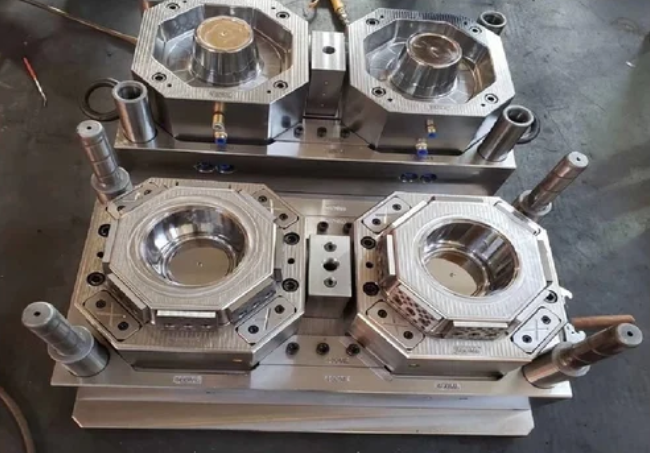Chair Mould for Injection Molding: Creating Innovative Seating Solutions
Introduction
The manufacturing industry has witnessed significant advancements over the years, with injection molding being one of the most widely used processes. This technique allows for the production of complex and intricate parts, including chair molds. Chair molds are essential in creating innovative seating solutions that are not only functional but also visually appealing. In this article, we will explore the process of chair moulding for injection molding and how it contributes to the creation of unique and comfortable chairs.
1. The Importance of Chair Moulds
Chair moulds play a crucial role in the production of chairs through injection molding. They determine the final design, shape, and quality of the chair. A well-designed chair mould ensures that the chairs produced are ergonomic, durable, and aesthetically pleasing. With the right mould, manufacturers can create chairs that cater to different needs, such as office chairs, dining chairs, or outdoor seating.
2. Designing the Chair Mould
Designing a chair mould requires careful consideration of various factors, including the intended use, material selection, and ergonomics. The mould must be designed in a way that allows for easy injection of molten plastic and proper cooling to ensure consistent quality. The design should also account for features such as armrests, backrests, and leg supports, which contribute to the overall comfort and functionality of the chair.
Furthermore, the design process should incorporate innovative features that set the chair apart from its competitors. This could include unique patterns, textures, or even customizations such as brand logos or personalized designs. Such features not only enhance the aesthetics but also make the chair more appealing to potential customers.
3. Material Selection for Chair Moulds
Choosing the right material for chair moulds is crucial as it directly impacts the quality and durability of the final product. Common materials used for chair moulds include steel, aluminum, and composite materials. Steel moulds are preferred for large-scale production due to their durability and resistance to wear and tear. Aluminum moulds, on the other hand, are lightweight and offer faster cooling times, making them suitable for smaller production runs or prototyping.
Composite materials, such as reinforced plastics or fiberglass, offer a balance between durability and weight. They provide excellent strength and rigidity while being relatively lightweight compared to steel. The material selection should be based on factors such as production volume, expected lifespan of the mould, and overall cost considerations.
4. The Injection Molding Process
Once the chair mould is designed and the material is selected, the injection molding process can begin. It involves injecting molten plastic into the mould cavity under high pressure. The plastic then cools and solidifies, taking the shape of the chair mould. After cooling, the mould is opened, and the finished chair is ejected. This process allows for quick and efficient production of chairs, making it economically viable for large-scale manufacturing.

5. Advantages of Chair Mould for Injection Molding
Chair moulds for injection molding offer several advantages compared to other manufacturing methods. These include:
– Cost-effectiveness: Injection molding allows for mass production of chairs at a lower cost per unit, making it an economical choice for manufacturers.
– Design flexibility: Chair moulds can be customized to meet specific design requirements, allowing for unique and innovative chair designs.
– Consistency and quality: Injection molding ensures consistent quality across multiple chair units, ensuring that each chair meets the desired specifications.
– Production efficiency: The injection molding process is highly efficient, allowing for quick production cycles and faster time-to-market.
Abschluss
Chair moulds for injection molding are instrumental in creating innovative seating solutions that are both functional and visually appealing. The design and material selection play a crucial role in ensuring the overall quality and durability of the chairs. With the advancement in technology, manufacturers can produce chairs that not only provide comfort but also offer unique features and designs. As the demand for innovative seating solutions continues to grow, chair moulds for injection molding will remain a vital component of the manufacturing industry.
Vorherige:Creating a Lightweight Plastic Chair Mold
Nächste: China Injection Crate Mould: Creating Efficient and Durable Storage Solutions
-
2023-4-24
Industrial molding parts are essential components used in the manufacturing and production processes of various industri...
Einzelheiten anzeigen -
Essential Components of an Injection Moulding Machine
2023-7-13
An injection moulding machine is a crucial tool used in the manufacturing industry to produce various plastic products. ...
Einzelheiten anzeigen -
Enhancing Product Quality with Electronic Molding Parts
2023-7-4
Electronic molding parts play a crucial role in ensuring the quality and functionality of electronic products. In today\...
Einzelheiten anzeigen -
Aerospace Mold: Precision Manufacturing for High-Flying Technologies
2023-6-4
The aerospace industry has seen significant growth over the past few decades, with an increased demand for cutting-edge ...
Einzelheiten anzeigen -
Achieving Precision and Durability: Aerospace Molding Parts for the Future
2023-5-20
Achieving precision and durability in aerospace molding parts is crucial for the success of any aerospace project. With ...
Einzelheiten anzeigen -
What is the process of plastic mold making?
2024-11-16
Plastic mold making is a complex and delicate process that involves multiple steps and multiple technologies. The core o...
Einzelheiten anzeigen







